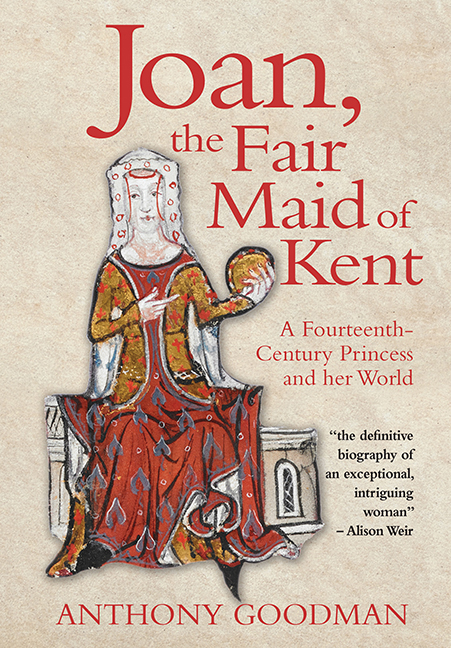Book contents
- Frontmatter
- Dedication
- Contents
- List of Illustrations
- List of Abbreviations
- Maps
- Genealogical Tables
- 1 Loosened Bonds
- 2 Tragic Beginnings
- 3 Bigamy
- 4 Married Bliss
- 5 A Whirlwind Rom
- 6 Princess of Wales and of Aquitaine
- 7 Deaths of Princes
- 8 The King's Mother
- 9 Terrors and Tribulations
- 10 Venus Ascending?
- Notes
- Bibliography
- Acknowledgements
- Index
8 - The King's Mother
Published online by Cambridge University Press: 25 October 2017
- Frontmatter
- Dedication
- Contents
- List of Illustrations
- List of Abbreviations
- Maps
- Genealogical Tables
- 1 Loosened Bonds
- 2 Tragic Beginnings
- 3 Bigamy
- 4 Married Bliss
- 5 A Whirlwind Rom
- 6 Princess of Wales and of Aquitaine
- 7 Deaths of Princes
- 8 The King's Mother
- 9 Terrors and Tribulations
- 10 Venus Ascending?
- Notes
- Bibliography
- Acknowledgements
- Index
Summary
MOST ENGLISH PEOPLE LIVING IN 1377 had known no other king than Edward III. It is not surprising that the shock of his death had a salutary effect on domestic politics. The day after it occurred, an apprehensive delegation of London citizens went to Sheen, to pay their respects at the bier. They found Richard, his mother and his uncles grouped around it. The scene was carefully staged. Gaunt took the lead in making a formal reconciliation with the Londoners. It was agreed that there would be royal arbitration of the outstanding issues dividing them, and that concessions would be made on both sides. The following month, on 16 July, Joan was present at her son's coronation in Westminster Abbey and at the customary banquet held the same day in the adjacent palace, in the awesome setting of Westminster Hall. The exhausted boy was carried out from the banquet on the shoulders of Sir Simon Burley. Burley had been one of his father's former knights, and was to be one of Richard's closest confidants. Joan seems to have approved of what many came to regard as his malign political influence, for she was to appoint him as one of her executors.
It is not clear for how long, after the start of Richard's reign, his mother continued to live in his house at Kennington, or when she made Wallingford Castle (see Plate VIII) in Oxfordshire her principal residence, as it was to be for the rest of her life. In August 1380 she received royal licence to make purveyance within about nine miles (three leagues) of Wallingford for herself, her household and horses whenever she came to the castle: the licence was to run for one year. In form the castle was a Norman motte and bailey on a large scale. Principal place of the honour of Wallingford, it had been founded by no less a person than William the Conqueror. It was adjacent to the north gate of the borough, with one frontage overlooking the Thames; a postern gate gave access from the castle to a quay. The Tudor antiquary John Leland was impressed by the castle's three great ditches, its keep and the domestic buildings in the bailey, including the royal range of apartments which Joan would have occupied, adjoining the collegiate chapel of St Nicholas.
- Type
- Chapter
- Information
- Joan, the Fair Maid of KentA Fourteenth-Century Princess and her World, pp. 131 - 151Publisher: Boydell & BrewerPrint publication year: 2017



